
|
You entered: unusual
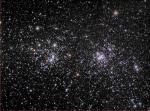 NGC 869 and NGC 884: A Double Open Cluster
NGC 869 and NGC 884: A Double Open Cluster
2.12.2003
Most star clusters are singularly impressive. Open clusters NGC 869 and NGC 884, however, are doubly impressive. Also known as "h and chi Persei", this unusual double cluster, shown above, is bright enough to be seen from a dark location without even binoculars.
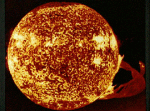 The Sun Erupts
The Sun Erupts
30.08.1998
The Sun is a seething ball of extremely hot gas. Above, the Sun was captured by Skylab in 1973 throwing off one the largest eruptive prominences in recorded history. The Sun has survived for about 5 billion years, and will likely survive for another 5 billion.
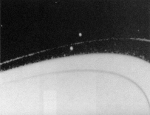 Prometheus, Pandora and Saturn's F Ring
Prometheus, Pandora and Saturn's F Ring
23.12.1995
The third and fourth innermost moons of Saturn were unexpectedly discovered to be gravitational "shepards." The inner moon Prometheus and the outer moon Pandora use their gravitational attraction to define Saturn's outermost ring.
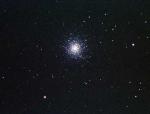 M13: The Great Globular Cluster in Hercules
M13: The Great Globular Cluster in Hercules
19.08.1998
M13 is one of the most prominent and best known globular clusters. Visible with binoculars in the constellation of Hercules, M13 is frequently one of the first steps beyond the ordinary visible to the casual sky gazer.
 M104: The Sombrero Galaxy
M104: The Sombrero Galaxy
15.08.1999
What's going on in the center of this spiral galaxy? Named the Sombrero Galaxy for its hat-like resemblance, M104 features a prominent dust lane and a bright halo of stars and globular clusters.
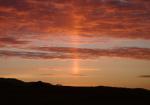 A Sun Pillar
A Sun Pillar
30.12.2002
Have you ever seen a sun pillar? When the air is cold and the Sun is rising or setting, falling ice crystals can reflect sunlight and create an unusual column of light. Ice sometimes forms flat, stop-sign shaped crystals as it falls from high-level clouds.
 APOD: 2008 January 1- Rays from an Unexpected Aurora
APOD: 2008 January 1- Rays from an Unexpected Aurora
1.01.2008
This aurora was a bit of a surprise. For starters, on this day in 2002, no intense auroral activity was expected at all. Possibly more surprising, however, the aurora appeared to show an usual structure of green rays from some locations.
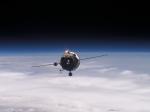 APOD: 2004 August 24- Supply Ship Approaches the Space Station
APOD: 2004 August 24- Supply Ship Approaches the Space Station
24.08.2004
The crew on board the International Space Station sometimes needs supplies. As the US Space Shuttle fleet prepares to return to flight, supplies usually now come from a robot Progress supply vessel launched from Kazakhstan.
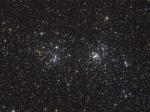 NGC 869 and NGC 884: A Double Open Cluster
NGC 869 and NGC 884: A Double Open Cluster
11.10.2005
Most star clusters are singularly impressive. Open clusters NGC 869 and NGC 884, however, are doubly impressive. Also known as "h and chi Persei", this unusual double cluster, shown above, is bright enough to be seen from a dark location without even binoculars.
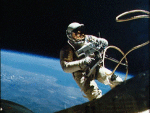 Walking in Space
Walking in Space
15.06.1996
Pictured above is the first american astronaut to walk in space: Edward White. White is seen floating outside the Gemini 4 capsule in 1965. The term "spacewalk" is deceiving since astronauts do not actually walk - they float - usually without their feet touching anything solid. White was connected to the spaceship only by a thick tether.
|
January February March April May June July |
|||||||||||||||||||||||||||||||||||||||||||||||||